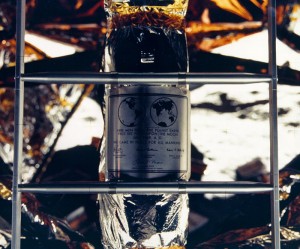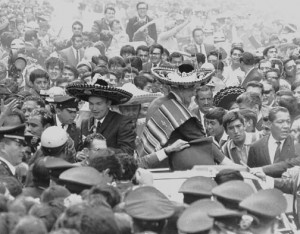With the saddening news of Neil Armstrong’s passing this weekend, my thoughts returned again to the public diplomacy power of NASA and the American space program. The field of space exploration is one in which the U.S. has reigned supreme since the Apollo crew’s famed moon landing in 1969.
Symbolically, the moon landing established the U.S. as the world’s dominant technological power, bar none. Yet it should be remembered that the moon landing was also an event of political consequence. Right in the middle of the Cold War, while the U.S. was still embroiled in Vietnam, and the space program itself was a factor in the ongoing conflict with the Soviet Union, Neil Armstrong’s words carried even more meaning than may first be assumed.
That’s one small step for (a) man, one giant leap for mankind.
We’ve all heard it so many times, but what value do we put on its meaning? Despite all the conflict of that decade, despite the Cuban Missile Crisis a mere 7 years before, despite the fears when Sputnik made its first orbit, Neil Armstrong chose these words. Yes, America planted its flag on the moon, and Armstrong’s spacesuit was emblazoned with the national symbol, but the moon landing was about much more than national pride.
With all this visual Americana, Armstrong chose not to highlight the triumph of the United States in the space race, but the accomplishment of all mankind. He was right in doing so. In some sense, the Soviet Union was responsible for encouraging that American effort. Without the challenge of the Soviet Union, would the U.S. have attempted the moon landing so quickly, or even at all? If certain economic theories contend that competition creates better products, the moon landing is certainly evident of this.
 Yet, Armstrong’s words are also not without precedent. In 1958, the National Aeronautics and Space Act established NASA and declared the purpose of the space program to be “devoted to peaceful purposes for the benefit of all mankind.” Eleven years later, the same Lunar Module that carried Armstrong and Buzz Aldrin carried a plaque with the words: “We came in peace for all mankind.” It remains on the surface of the moon to this day.
Yet, Armstrong’s words are also not without precedent. In 1958, the National Aeronautics and Space Act established NASA and declared the purpose of the space program to be “devoted to peaceful purposes for the benefit of all mankind.” Eleven years later, the same Lunar Module that carried Armstrong and Buzz Aldrin carried a plaque with the words: “We came in peace for all mankind.” It remains on the surface of the moon to this day.
Much of the discussion with regards to Armstrong’s passing has centered on his humility. With recognition of Armstrong’s humble and quiet post-moon life, one wonders how America capitalized on the triumph of the Apollo 11 crew to an international audience.
After the crew returned to Earth, they set off in one of the aircraft used as Air Force One on the Giant Leap Tour, visiting 22 countries over 38 days. The astronauts, their wives, and accompanying crew included two USIA advisers and four VOA staff. Their tour included a stop in West Berlin, where they viewed the Berlin Wall and made statements. In India, they were greeted by a crowd of 1.5 million people.
The moon landing itself saw a variety of efforts to promote the mission overseas. USIS (as USIA was known overseas) posts opened their doors to allow people to view the landings live on TV. 125 other U.S. posts hosted exhibits, foreign journalist assistance was present in Florida, and a European Apollo News Center opened in Paris.[1]
While being the first U.S. crew to go on such a tour, precedent was first set by the Soviet Union, when the first man in space, Yuri Gagarin went on a world tour beginning in 1961. This included stops in the UK, Cyprus, and Hungary, amongst others. In 2011, a statue of Gagarin was unveiled in London in honor of the 50th anniversary of his flight and the lasting impression he made during his visit to the UK.
As a public diplomacy tool, the space program may not be able to reverse poor public perceptions of the United States, nor should it be used to do so. What Armstrong and others have understood is that it can be used as a point of commonality. While the U.S. may far outpace the achievements of others in space, the use of space exploration as a means to work together should never be underestimated. By 1975, just 6 years after the Apollo 11 moon landing, a Soyuz capsule from the Soviet Union and a U.S. Apollo module successfully docked in space. This spirit of cooperation continues with Russia and other nations to this day.
While we look at the advances of the Chinese in recent years, this may be something to consider. Rather than looking at the Chinese space program with fear and suspicion, the U.S. should look for ways with which it can lead and cooperate with China to further the cause of science. It may create benefits for all mankind.
[1] Cull, Nicholas J. (2008). The Cold War and the United States Information Agency. Cambridge University Press. p.305



